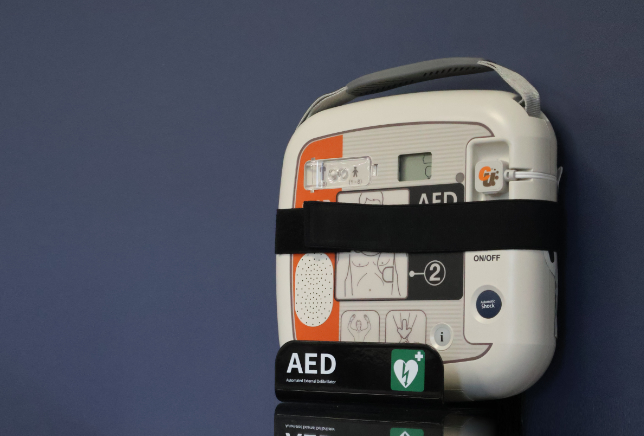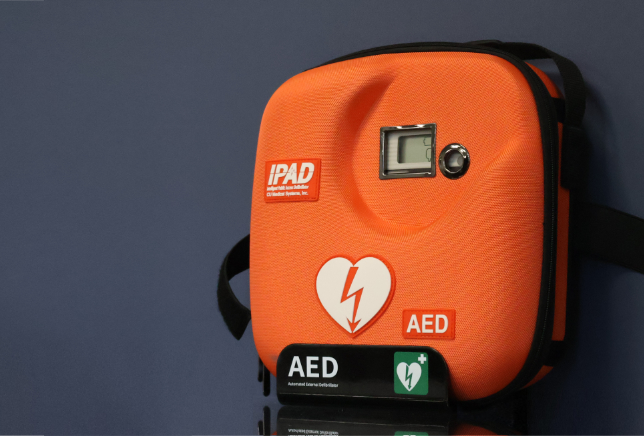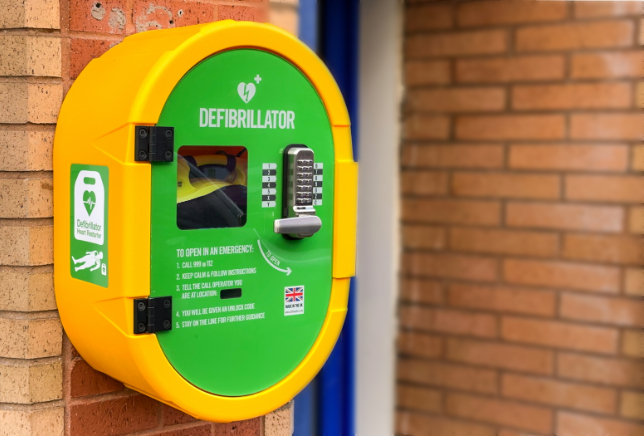Where to Store a Defibrillator
Defibrillators should be visible and accessible so that they can be easily located and deployed in an emergency. They are usually wall monuted and protected by carry cases or stored in dedicated cabinets.
Defibrillator Cabinets, Wall Brackets & Carry Cases: Which Do You Need?
When choosing how to store your Automated External Defibrillator (AED), it’s important to pick the right solution for the environment, whether that’s indoors, outdoors, or on the go. This guide walks you through the differences between cabinets, wall brackets, and carry cases, helping you make the right choice based on your needs.

Defibrillator Wall Brackets
Wall brackets can be wall mounted in a visible and accessible location that is easy for everyone to find in an emergency. They are easy to install and come complete with screw fixings.
Most wall brackets have been designed to fit a specific model of AED. So, if you wish to use a bracket to wall mount your defibrillator, check that there is one suitable for the make or model.

Defibrillator Carry Cases
Defibrillator carry cases are usually brightly coloured, often in high-visibility shades like red, orange, or green.
These cases are purpose-built to protect your defibrillator from bumps, drops, and environmental elements such as dust and moisture. Most of them come with shoulder straps or handles, making them easy to transport wherever they're needed most.

AED Storage Cabinets
Storage cabinets pprovide more protection for your AED than a wall bracket. They can guard against misuse and will protect against knocks or damage. They are easily accessible and provide an obvious and secure location for your defibrillator.
Defibrillator cabinets can be wall-mounted using the fixings provided and are available for indoor and outdoor use.
Wall Brackets
Wall brackets are a great option when budget and simplicity matter. These are minimalist wall-mounted holders designed for AEDs located in secure indoor environments.
Why choose a wall bracket?
- Quick, easy installation
- Highly visible – no barriers to access
- Supplied with screws and fixings
- Great for staffed locations like reception areas or staff rooms
Note: Most brackets are model-specific, so always check compatibility with your AED.
Carry Cases
If you need to transport your defibrillator regularly or have a mobile medical setup, a carry case is essential. They're designed to protect your AED in transit while keeping all accessories in one place.
Ideal for:
- Event first aid kits
- Sports team medics
- Mobile responders
- Vehicle-based AEDs (e.g. taxis, work vans)
Key features:
- Custom-moulded for specific AED models
- Durable and water-resistant materials
- Shoulder straps or handles for easy carrying
- Space for spare pads, batteries, and user instructions
Note: Not suitable for permanent wall-mounted storage in public spaces.
Cabinets
Cabinets are the most secure and protective option for AED storage. They are designed to house defibrillators in both indoor and outdoor environments, offering a wide range of features based on location and usage needs.
Indoor Cabinets
Indoor cabinets are designed for safe, visible AED storage inside buildings where the temperature remains above 8°C. They're ideal for locations like:
- Offices
- Schools
- Leisure centres
- Retail spaces
Key benefits:
- Protects the AED from knocks, dust, and tampering
- Can include alarms or locks for extra security
- Easy to install with wall fixings supplied
- Keeps the AED in a clearly marked, central location
Outdoor Cabinets
Outdoor AED cabinets are essential in public and unsupervised areas, where exposure to the elements is unavoidable.
Best for:
- Villages and towns
- Sports fields
- Car parks
- Remote community areas
Key features:
- Weatherproof design (minimum IP65 rating)
- Heated interiors to prevent AED battery/pad failure in low temperatures
- Lockable or alarmed for theft deterrence
- Bright colours, lighting, and signage for visibility
- Must be installed by a qualified electrician due to mains wiring
Extra Features to Look Out For
Lockable Cabinets
- Deter misuse or theft in public places
- Require an access code (check if your local ambulance service stores these)
Alarmed Cabinets
- Sounds an alert when opened
- Deters tampering and alerts bystanders during emergencies
- Battery-powered – no extra wiring required
Internal Lighting
- Helps locate the AED at night
- Some outdoor cabinets include torches that can be removed for use
Material & Weather Resistance
- Stainless steel – robust and corrosion-resistant
- Polycarbonate – lightweight, UV-stable and often made from recycled plastic
- Mild steel – suitable inland but not near the coast
Check Compatibility Before You Buy
AEDs come in different shapes and sizes. Always verify that your chosen cabinet, bracket, or case is compatible with your specific make and model. Most product pages will have a compatibility tab to help guide your selection.
Summary: Quick Recommendations
| Storage Type | Best For | Protection | Requires Power? | Installation Level |
|---|---|---|---|---|
| Wall Bracket | Staff-only or secure indoor areas | Low | No | Basic DIY |
| Carry Case | Mobile or temporary use | Moderate (portable) | No | None |
| Indoor Cabinet | Offices, gyms, schools | Moderate | No | Basic DIY |
| Outdoor Cabinet | Public or unsupervised outdoor areas | High | Yes (for heating) | Electrician required |